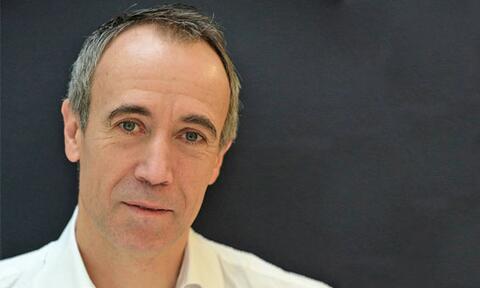
Projet NeuroSonoGene wins ERC Synergy Grant 2023
Congratulations to the NeuroSonoGene project team comprising Serge Picaud (Director of the Institut de la Vision at Sorbonne University, INSERM, CNRS), Mickael Tanter (Director of the Physics for Medicine Laboratory at ESPCI, INSERM, Université Paris Sciences lettres, CNRS) and Anna Moroni (Professor at the University of Milan) on winning the ERC Synergy Grant 2023.
The ERC Synergy Grant is providing €8 million to develop the project A sonogenetic brain-machine interface for neurosciences and visual restoration.
The aim of the project is to develop sonogenetic therapy tools for the study of brain function. Secondly, the team will develop therapeutic applications for sonogenetics, such as visual restoration.
The fundamental principle of sonogenetics is to use a genetic approach to make neurons sensitive to ultrasound. Neurons are naturally very insensitive to ultrasound. Consequently, stimulating them requires the use of very high acoustic energies, which is not compatible with continuous application to tissues. The principle is therefore to express a protein specifically sensitive to ultrasound in neurons. For the moment, our researchers have used a protein which is an ion channel called MscL (for Mechanosensitive large Conductance).
The NeuroSonoGene project aims to develop other ion channels, as the one currently used can only activate neurons. The team now wants to develop other ion channels that would also inhibit neurons, as well as excitatory ion channels, but with different properties from MscL in order to choose different modes of neuron manipulation. Sonogenetics could thus either activate or inhibit neurons. In basic research, the aim is to make neurons sensitive to ultrasound so as to take control of their activity at will by means of an ultrasound beam.
For the therapeutic application on visual restoration, it would be necessary to wear a pair of glasses to take an image of the environment in front of the blind patient in order to project this image by ultrasound on his visual cortex. This visual restoration would concern adults who have lost their sight and no longer have an optic nerve, the eye-brain link, such as patients suffering from glaucoma or diabetic retinopathy.
The therapy would involve injecting a gene therapy vector that codes for the MscL ion channel, so that neurons in the visual cortex become sensitive to ultrasound. Neurosurgeons would implant an ultrasound simulator in the skull. This technique would avoid any permanent contact with the brain, unlike current cortical prosthesis techniques based on electrodes that electrically stimulate the brain. Indeed, after a few months, these prostheses induce a reaction around the device, leading to its malfunction. The NeuroSonoGene project aims to offer a solution without direct contact with the brain. The advantage of ultrasound is its ability to penetrate tissue, as beautifully illustrated by the prenatal images. In therapy, the image projected onto the cortex by ultrasound would be created virtually, like a hologram. Since vision consists of rapidly refreshed images, as in video (30Hz), the project aims to print images in the visual cortex, with a refresh rate of the same order (13-30Hz) and with images of good optical quality (at least 1000 pixels). The patient should then be able to discern black-and-white images at a rate close to that of video, thus regaining fluid visual perception.
Proof of concept was obtained in a mouse model by showing that the spatial and temporal resolutions of sonogenetics are compatible with visual restoration, and then proof of light perception was provided by ultrasound stimulation of the visual cortex. To provide evidence of light perception, the animal was taught to associate light stimulation with water delivery, which it achieved in four days. After four days, the light stimulation is replaced by ultrasonic stimulation of the visual cortex. The animal then produces the same behavior as if it were a flash of light. However, in the absence of injection of the gene therapy vector into the visual cortex, the animal did not produce this associative behavior. The animal was able to perceive the light through cortical activation thanks to the combination of the injected product and ultrasound stimulation.
For this ground-breaking work, biologists at the Vision Institute teamed up with the laboratory of physicist Michael Tanter, a world leader in the manipulation of ultrasound for both imaging and therapy. He has recently developed a new technique for functional ultrasound imaging of the brain.
Anna Moroni from the University of Milan joins this consortium to work on ion channel engineering. The ion channel is a protein that passes through the cell membrane and opens or closes depending on various molecular or physical factors. When the channel opens, ions pass through the cell membrane. Depending on the nature of the ions, the cell is excited (Na+ ions), or inhibited (K+ or Cl ions).
This collaborative approach opens up new perspectives for understanding the role of certain neurons in brain function, as ultrasound can penetrate deep into tissue. Scientists will thus be able to use ultrasound to control the functioning of neurons, by activating or inhibiting a neuronal circuit and examining the result on the animal's behavior. In conclusion, this new NeuroSonoGene project holds out great hope for understanding brain function, restoring vision in blind patients, and even for other therapeutic applications of this new form of brain-machine interface using sonogenetics.
